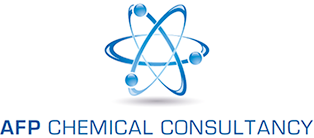Cosmetic Product Safety Reports (2013 Compliant)
The 2013 EU Cosmetics Regulation EC No 1223/2009 On July 11 2013, EU cosmetics legislation changed significantly both in terms of the “Responsible Person’s” responsibilities and the format of the Cosmetic Product Safety Report (CPSR).
The Recast regulations can be viewed here:
www.eur-lex.europa.eu/LexUriServ/LexUriServ.do?uri=OJ:L:2009:342:0059:0209:en:PDF
When and if Brexit occurs then there will be some changes, such as a parallel UK Cosmetics Regulation and Portal. There is clearly still uncertainty regarding this, however you can be reassured that we will be monitoring the situation carefully.
This is an area in which AFP Chemical Consultancy has particular expertise. The Principal has many years of experience in the field and a background as Technical Manager for 18 years for Chanel Ltd, more latterly for the development of several leading brands ranges of cosmetics, right the way from the initial marketing brief all the way through to mass production.
Formulating cosmetics is a complex process and full of pitfalls for the unwary, particularly with all manner of “exotic” materials available.
The key requirement is to produce a “consumer desirable” product that is safe and affordable.
Key steps in the project include the product brief, initial sample preparation, selection of a suitable preservative system, stability studies and proof of any particular claims made. These are steps that cannot be rushed and sometimes take many revisions to get right.
Having a Professional on hand can be an invaluable asset at this time.
The final step is to carry out a safety assessment to produce the Cosmetic Product Safety Report (CPSR). The sign off of the CPSR can only be carried out by appropriately qualified persons. The principal is a qualified person as a Chartered Chemist (CChem).
The CPSR is a mandatory requirement and applies to any cosmetic sold in the EU irrespective of whether it is made by, or imported by a multi-national company, or an individual.
If you are the manufacturer there are more stringent requirements with respect to Good Manufacturing Practice, which will unfortunately mean more paperwork.
The content of the Cosmetic Product Safety Report (CPSR) is now defined in the legislation. Whereas under the old legislation (The Cosmetic Products (Safety) Regulations 2008) the “Health Assessment” was simply a statement of opinion and could in theory be “written on the back of a beer mat”. Of course in practice that’s not how it was done but the CPSR will require much more detail to be supplied to the assessor, regarding the ingredients, the method of manufacture of the finished product and the specification of the final product, together with a detailed description of how the product is to be used. This is because the assessor has to calculate Margins of Safety of each ingredient, which are based on an exposure scenario of how much and how often a product is used. For example, it is quite possible that a product sold as a hand cream would be compliant but not compliant if sold as a body cream because more of the product is used in the latter case. A key factor is having a secure and competent supply chain who know what they are supplying and can provide appropriate technical support if needed.
The old style “Safety Assessment” will be a thing of the past and in fact any existing formulations must be reassessed under the new regulations for any batches made on or after the 11th July 2013.
The Responsible Person will also have to register each product onto the ECNP (European Cosmetics Notification Portal) (which is free of charge).
It is certain that the cost of the CPSR will in general increase although it is also fair to say that it basically costed on a time taken basis. If you are simply repacking Shea Butter as a moisturiser, the CPSR is clearly going to take a lot less time to produce and therefore be less costly than a product containing (say) 30 ingredients (some of which may also be multi component).
AFP Chemical Consultancy understand that for small and craft producers in particular this is going to create some obstacles to be overcome but it is not impossible to do, given the right support, which is where AFP Chemical Consultancy comes to the fore. As an introduction, following an enquiry you will be sent a comprehensive literature pack explaining what is required. As always the initial consultation is free of charge and without obligation, after which telephone support or face to face meetings also available although these may be chargeable but we do try to be as flexible as possible.
Once a CPSR has been issued in the EU then this will enable the product to be sold in all EU member states as well as Switzerland, Norway, Liechtenstein and Iceland,
It is worth bearing in mind that your Product Liability Insurers will often require you to supply a document confirming that a “Safe for Sale Certificate” is available.
The following links give a valuable introduction and can be downloaded free of charge:
ECNP User Manual:
www.ec.europa.eu/consumers/sectors/cosmetics/files/pdf/cpnp_user_manual_en.pdf
Deals with the new PIF requirements:
www.cosmeticseurope.eu/publications-cosmetics-europe-association/guidelines.html
Deals with information required from fragrance suppliers:
www.cosmeticseurope.eu/publications-cosmetics-europe-association/guidelines.html
Deals with labelling of cosmetics:
www.cosmeticseurope.eu/publications-cosmetics-europe-association/guidelines.html



